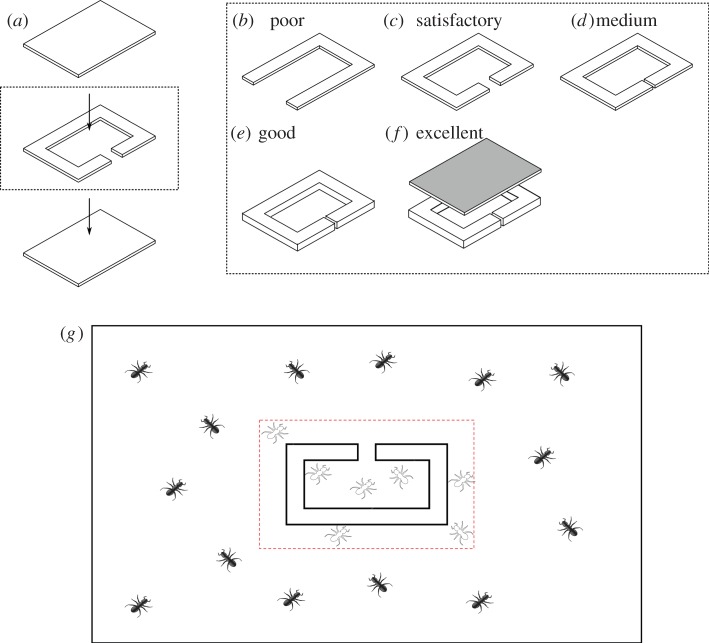Figure 1.
Nest design in the laboratory: (a) nests are composed of two glass slides sandwiching a cardboard perimeter; (b) light, thin cardboard, three walls; (c) light, thin cardboard, wide entrance; (d) light, thin cardboard, narrow entrance; (e) light, thick cardboard, narrow entrance; (f) dark, thick cardboard, narrow entrance. Cavity size is 35 × 60 mm; thin walls are 1 mm and thick walls are 2 mm; wide entrance is 4 mm and narrow entrance is 1 mm. Nest designs were based on the study of Franks et al. [5]. (g) Experimental arena (50 × 75 cm) with the test colony in one of the test nests. Black ants are scouts and white ants are non-scouts. Dotted line corresponds to the area where ants were considered as non-scouts (up to 1.5 cm away from the nest). (Online version in colour.)

